#prof. frederic
Explore tagged Tumblr posts
Text

☆ Mature content I ✐ Requested I № Followers Festival
_
➼。゚ANDREI SVECHNIKOV
➼。゚AUSTON MATTHEWS
➼。゚ERIK JOHNSON
➼。゚FREDERIK ANDERSEN
➼。゚JACK DRURY
➼。゚JACK HUGHES
➼。゚JOEL FARABEE
➼。゚JOHN TAVARES
➼。゚JOSEPH WOLL
➼。゚KEVIN FIALA
➼。゚LUKE HUGHES
➼。゚MATTHEW KNIES
➼。゚MATTHEW TKACHUCK
➼。゚NATHAN MACKINNON
➼。゚NICO HISCHIER
➼。゚PYOTR KOCHETKOV
➼。゚QUINN HUGHES
➼。゚SETH JARVIS
➼。゚SIMON BENOIT
➼。゚STEVEN LORENTZ
➼。゚TRENT FREDERIC
➼。゚WILLIAM NYLANDER

_
SERIES [Masterlist]
Intern x Willy ☆
Inexperienced!reader x Willy ☆
Dad!Willy x reader ☆
Prof!Willy x reader ☆
Better In Time- Frederik Andersen x reader ☆
_
COLLECTIONS
A HOLIDAY COLLECTION ❄︎
250 FOLLOWERS FESTIVAL №
500 FOLLOWERS FESTIVAL №
Birthday Festival ♎︎
Sexy Christmas ☃︎
280 notes
·
View notes
Text
Disney Family (Pure Good)
King Creon and Queen Eurydice (Parents) - Megara (Daughter)
Zeus and Hera (Psrents) - Hercules (Son)
Prof. Archimedes Q. Porter and Mrs. Porter (Parents) - Jane Porter (Daughter)
John Clayton and Alice Clayton (Parents) - Tarzan (real name: John Clayton II) (Son)
General Li and his wife (Parents) - Li Shang (Son)
Fa Zhou and Fa Li (Paters) - Mulan (Daughter)
Chief Powhatan and Nonoma Winanuske Matatiske (Parents) - Pocahontas (Daughter)
Sultan Hamed and Sultana Lia (Parents) - Jasmine (Daughter)
Cassim and Zena (Parents) - Aladdin (Son)
The King and The Queen (Parents) - Addam (Son)
Maurice and his wife (Parents) - Belle (Daughter)
King Maurice and Queen Brigette (Parents) - Eric (Son)
King Triton and Queen Athena - Attina, Alana, Adella, Aquata, Arista, Andrina, and Ariel (Daughters)
King Hubert and Queen Annalese (Parents) - Phillip (Son)
King Stefan and Queen Leah (Parents) - Aurora (Daughter)
King Samuel and Queen Diane (Parents) - Charles (Prince Charming) (Son)
Sir Richard and Cecelia (Parents) - Cinderella (Ella) (Daughter)
The King and The Queen (Parents) - Florian (Son)
King Leopold and Queen Rosemary (Parents) - Snow White (Daughter)
James and Eudora (Parents) - Tiara (Daughter)
The King and The Queen (Parents) - Naveen and Ralphie (Sons)
King Frederic and Queen Arianna (Parents) - Rapunzel (Daughter)
King Edmund and The Queen (Parents) - Eugene Fitzherbert/Flynn Rider (Son)
King Fergus and Queen Elinor (Parents) - Merida (Daughter), Harris, Hubert, and Hamish (Sons)
King Agnarr and Queen Iduna (Parents) - Anna and Elsa (Daughters)
Cliff and Bulda (Adoptive parents) - Kristoff (Son)
Tui Waialiki and Sina Waialiki (Parents) - Moana (Daughter)
3 notes
·
View notes
Text
The Haunting of Solhaus Manor
Dated October 9th 1900
“and then the figure, turning slowly round, discovered to Frederic the fleshless jaws and empty sockets of a skeleton, wrapt in a hermit’s cowl. “Angels of peace protect me!” cried Frederic, recoiling. “Deserve their protection!” said the spectre.” -Horace Walpole 1764
Abstract:
Upon request from local authorities two academics from the Miskatonic Univ. Occult Sciences Dept., Profs. F Vernon and J Van Alden, were dispatched to ascertain the cause and nature of a purported wrath induced post-mortem curse.
Listed Below is a briefing of the Investigation as recorded by Prof. Frederick Vernon and Prof. Johann Van Alden for the purposes of further academic study and review regarding the topics of; Poltergeists, Curses, and Active Hauntings
Background and History:
In the old mill Town of Belhamton New Hampshire at the east end of Brandenburg street, lie the remains of what was once a very stately and dramatic hall called Solhaus, positioned so that the sun would rise behind it with two hills in the distance framing it. It was built in 1816 by Siegfried Zeller who had recently opened the rising sun steel mill which through shrewdness had made him quite wealthy. He was a cruel and generally unlikeable man, especially so after his wife Brunhilda died of fever where he retreated even further into cruelty to prevent facing the sorrow that overcame him.
His daughter, Matilda, was well loved by everyone in the community and spoken highly and warmly of by society as far afield as Boston. In the summer of 1822, She fell in love with and eventually became engaged to the foreman of the steel mill, one Joseph Sklarz. This perceived betrayal of his only daughter, a Prussian of noble bearing marrying a jewish peasant, incensed Siegfried. He seemed to grow more incandescent with rage each day as the wedding grew closer and closer.
The day before the wedding Joseph turned up missing. Siegfried insisted he had skipped town but Matilda and Joseph's friends searched high and low for him. On the day of the wedding, he was found crushed under a pallet of steel ingots. Everyone in the town believed that Siegfried had murdered him. How could they not?
However, because money is a powerful thing, no justice came to the man. Poor Matilda was crushed completely and totally. But for the first time as far as anyone could recall Siegfried was smiling, beaming ear to ear even with a smug and evil satisfaction. Poor Matilda had her wedding dress dyed black and wore it as her mourning clothes. After a while most life in the town returned to normal.
Some months later Siegfried was found dead. His throat was slit so deeply that his head was nearly cut off. His head had been mutilated and disfigured. His eyes and tongue were carved out and his lower jaw was torn out. He was swiftly and quietly buried under the house with no fanfare and no mourning.
Stricken with grief and driven mad with hatred Matilda walked the halls of her house for the rest of her days until eventually in 1888 she was found dead in her bed. She was buried in the garden next to her beloved Joseph. The house never sold as no one wanted to touch it. Everyone knew very well that the house was cursed. Those who ventured inside it could never last the night reporting strange and bizarre phenomena like phantom lights and disembodied wailing. Some even reported seeing a lady in a black veil walking by windows in the dead of night holding a candelabra. Many heard whispers coming from the house and so for 12 years the house sat rotting and vacant.
Report on the investigation:
We, Prof Van Alden and myself, had been called by the mayor of Belhamton, who was coincidentally Joseph Sklarz’s Grand Nephew one Turner Sklarz, to disprove and dismiss the rumors of haunting once and for all. Our plan was to stay the night in the house, so that this dark chapter and the spirits within might finally rest.
On one autumnal evening in late October, we departed for the house. Armed with our means of illumination, scripture, the blueprints of the house, and a fair bit of bravery. Finding it at 10:47 PM, in a disagreeable state as its yard teemed with brambles and all manner of vermin as wild roses climbed its facade staining it a deep and dark blood red.
After poking and prodding we found the door completely grown over with the roses as were most windows on the first floor. As we uncovered and pushed open the creaky door, it revealed a dusty, dimly lit but still stately interior with cobwebs that stretched from the ceiling to the floor. The air felt heavy with secrets, and the old wooden floorboards or at least what we thought were the floorboards groaned beneath our feet. One, two, one, two, we counted our steps so as to best listen for anomalies. One, two, one, two three. We peered in the darkness surrounding and yet found nothing. We were completely alone… or so we thought.
As we made our way room to room, we saw many mirrors draped with black veils. But through a few moth chewed holes in the muslin, we noticed brief and fleeting glimpses of a woman in a black veil. Like a shadow passing in the corner of the eye always just out of view. We could not see her eyes but we could sense her mourning from the brief glimpses we saw. As we later learned, chalking this up to mere tricks of the light was severely misplaced.
As strange as that was, the true extent and potency of the high strangeness we found ourselves swimming in didn't begin to properly set in until we entered what was the dining room. The table was laid with great care and precision, but what should have been white was replaced with black, as though the house was still in mourning. Through a wind in some unseen chamber we heard a moan, almost a wail as faint as a prayer at first yet thoroughly unmistakable. Soon it grew louder and louder until the wailing was all we could hear. It was then we heard a man's screams emanating from the basement. It was a horrible choking croaking noise and we soon knew that those weren't wails of despair. They were wails of rage, cries of vengeance, horribly bloody vengeance. Suddenly, like a flash of lightning in the midnight sky, the cries were gone, not even the echoes remained.
We felt compelled to find their source, moved not by mortal will but drawn in like a beast in a snare. Committing to doing the job we came here for.
The stair to the basement was rotted and spongy, the air reeked of blood and viscera. The smell was worse than a slaughterhouse.We heard uncountable multitudes of flies buzzing, they were a crawling squirming, writhing, endless tide of moving black fuzz covering all the surfaces of the chamber almost completely. We did see unmistakable red blood soaked footprints Trudge up and out of the basement, as if someone we could not see was walking up the stairs. Suddenly, with a great buzzing rush of sound. The flies left with the maker of the footsteps revealing the basement empty save from a jawless cut covered skeleton bound by chains of steel stuck clawing its way from the soil imprisoning it.
We thought we saw something in the skull glow like a flicker of a malicious soul whose wrath was not yet extinguished. The spirit’s will thrashed like an animal gnawing off its own leg to escape a trap as black curdled blood seeped from the roof to the floor as the wailing began again. To escape, we had to trudge up the stairs through the abhorrent slop. By the time we reached the ground floor this charnel sludge was up to our ankles and the smell was indescribable. My colleague Prof. Van Alden recited scripture, and as his words echoed, we heard the house rage and seethe. The scream of pain from the man in the basement had turned to rage and wrath and we could hear the phantom clawing its way up the stairs behind us. With Prof. Van Alden still reciting scripture we bolted up the stairs as fast as we could given the muck we were slogging through. The screams of unholy anger only growing louder and louder as it clawed itself closer and closer. As we reached the door we passed through a spiderweb and it was gone. Everything was still and quiet once again. Our clothes were dry and unstained and there was no blood to be seen. All we heard was a dying whimper and the rattling of chains slinking off into the darkness.
Conclusion:
After leaving the house at the early break of day we stumbled back to our lodgings and began drafting a report for the mayor as well as our recommendations on how to proceed. Although there was no way to accurately or scientifically report what in fact occurred. We could still give our, if not learned then at least experienced, opinion.
Our report had three main points
Some things are most decidedly there,
Those things are most decidedly hostile,
Those things are most decidedly unwilling or unable to move.
However, that wasn't what we reported to the mayor. What I instead reported to the mayor was that the building was infested completely with a particularly potent strain of black "mold". No ghosts, no spirits, just a humble fungus and a hearty dose of hysteria at its history. I advised him to cordon off the building for public safety to prevent people getting poisoned over a ghost story.
I consulted Prof. Van Alden on this and we both agree that it warrants further study. So under the auspices of collecting mold samples for our mycological colleagues, we have arranged a later expedition to retrieve the skeleton of Mr. Zeller. As well as other samples of soil, wood, and other such materials.
Addendum from Professor Fredrick Vernon to the Faculty of the Miskatonic University Occult Sciences Department: Thanks to assistance from Mr. Siegel, we have secured the specimens following that we allowed the building to be cleared and the land redeveloped as it is now the Matilda Sklarz Memorial Park. From what has been relayed the roses have grown flawlessly albeit a bit thorny with no reported ill effects from the "mold".
1 note
·
View note
Video
🎬Women In The Night (1948) | Sci-Fi War Drama | Full Movie English
Women in the Night is a 1948 US film directed by William Rowland. The movie is also known as When Men Are Beasts. The movie s about a group of women being held by Nazis in Shanghai. They have developed a super weapon, a cosmic ray that is more devastating than the atomic bomb. Cast Tala Birell as Yvette Aubert William Henry as Philip Adams / Maj. von Arnheim Richard Loo as Col. Noyama Virginia Christine as Claire Adams Bernadene Hayes as Frau Thaler Gordon Richards as Col. von Meyer Frances Chung as Li Ling Jean Brooks as Maya Kathy Frye as Helen James Helen Mowery as Sheila Hallett Benson Fong as Chang Helen Brown as Angela James Frederick Giermann as Major Eisel Philip Ahn as Prof. Kunioshi Arno Frey as Field Marshal von Runzel Beal Wong as General Mitikoya Iris Flores as Maria Gonzales Frederic Brunn as Lt. Kraus Harry Hays Morgan as General Hundman Paula Allen as Nurse Joy Gwynell as Suicide Girl William Yetter Sr. as German Officer Noel Cravat as Japanese Officer Wolfgang Zilzer as German Doctor Home media Never miss a video. Join the channel so that Mr. P can notify you when new videos are uploaded: https://www.youtube.com/@nrpsmovieclassics
0 notes
Note
#6. OC scolding LI, and LI loves it!
I’m going to do a quick switcheroo on this one!
f!Lavellan/Josephine co-starring Prof. Frederic, Prof. Bram Kenric, Lace Harding, Collette: “Of Professors and Pastries” (AO3)
Josephine resisted the urge to slam the door behind her as she followed the Inquisitor into her office, a short corridor away from the main hall of Skyhold’s main keep, where an affray which had broken midway through a function was being concluded, the aggrieved shouts of its participants echoing behind them until the door finally sealed shut.
Rivka had crossed the room, sitting back on Josephine’s desk with her hands astride her bottom, tapping gently on its edge as one would an instrument, her lip curled into a slight smile even as a furious Josephine was closing the distance with her with every stride, until she stared down as imperiously as she could at her Inquisitor and girlfriend, taking advantage of the three-inch difference in height between them.
The ambassador took in a deep breath, finally stating slowly but firmly, “I am going to need a full explanation as to why the two eminent scholars of the University of Orlais are covered in cream pastries and are being physically restrained by Scout Harding and Collette.”
Rivka’s eyes narrowed as she asked, “Do you need the entire context, or…?”
Clasping her hands to stop them from making strangling motions, Josephine said, “That would be appreciated, Rivka.”
“All right,” she started, “So I thought that whilst we were holding that dreary academic symposium…”
Josephine screeched, “Dreary?!”
“…over here, and yes, while I do understand the importance of sharing our knowledge, coming from where I have, there are only so many lectures in the War Room I can sit through before drifting into the Fade…”
“Just get to the point,” Josephine hissed.
“…I thought I might draw upon the knowledge of our archaeologist and draconologist friends, namely, Professors Kenric and Frederic, as concerns one of the artefacts that we’ve wound up with in the undercroft.”
Josephine raised an eyebrow, asking, “One of the weapons you’ve encountered in your exploits, you mean?”
Rivka nodded, saying, “Exactly. To be precise, I just wanted to know what either of them could tell me about that Axe of the Dragon Hunter I got off Bonny Sims down in the courtyard.”
“Ah, right,” Josephine said. “Given that it was an easy twelve thousand sovereigns from the treasury I suppose that makes sense, from a certain point of view. Incidentally, next time you’d do well to let me negotiate prices especially when the values come up to that much.”
Rivka crossed her arms, asking, “Are you lecturing me on diplomacy or haggling, Josephine?”
Josephine’s stare was so sharp it could cut the air, where with enormous restraint, she finally managed, “Those are one and the same thing in Antiva, Rivka. Will you let me continue, or at least stop digressing?”
Rivka held her hands up in surrender. “All right, so the main point of what I was going to say was that I just wanted to learn more about Bonny Sims’ axe, and suddenly Professor Kenric got all professional, saying it was hardly appropriate for him to try and valuate it with his expertise then and there, but Professor Frederic was more than willing.”
“So, they had a dispute over the professionalism of evaluating artefacts on the spot?”
“Oh, no, it wasn’t that,” Rivka said, continuing, “Not wanting to be outdone, Professor Kenric started cutting in with his own observations, and while I don’t remember all of the details of that flurry of points they were shooting at each other, the exact moment Frederic excitedly concluded that this couldn’t be anything but the original, Bram objected that this clearly was a forgery made twenty years after Nephram Pentaghast’s possible lifetime.”
“Ah,” Josephine said comprehendingly, adding, “Oh no.”
“Oh yes,” Rivka said. “It was right at the moment that Frederic called Bram ‘a puffed-up abecedarian of a Marcher with no sense of romance’ that the two of them started coming to blows.”
Josephine planted her wrists on her hips, questioning Rivka, “And that’s the point where you decided the best thing to do was to arm Professor Kenric with a pie?”
Rivka answered, “Well, it was that or the axe.”
Becoming increasingly incoherent with rage, Josephine spluttered, “You-you, oh you…were those genuinely the only two options?!?”
“He had the axe in his hands,” she said defensively. “The way I see it, at least this wound up turning the two of them into laughing-stocks instead of, well, dead.”
Taking several deep breaths, Josephine said, “All right, all right. Maybe you had a point there…where is the axe now, anyway?”
“Safely in the hands of the retainers,” Rivka said, “And yes, I mean, it was admittedly hilarious, but I was actually trying to defuse the situation, so—”
Rivka never finished her justification, as the door swung open to reveal the two professors, who had made some attempts to clean the cream and cake off their clothes, being marched as sheepishly into the room as students into a headmaster’s office, Frederic being escorted Collette, and Kenric by Harding.
Bram glanced imploringly over to his research assistant, and Collette flashed him a look nearly as steely as Josephine’s to Rivka earlier on, cocking her head towards the Inquisitor and the ambassador as though it was an order.
Clearing his throat, the professor began, “I, and the eminent Professor Frederic, are here to apologise for our conduct as concerns what ought to have been a purely academic matter, and the effect that our, ah, affray has had on the atmosphere of the symposium.”
Frederic added, “Even were one of us in the absolute right and the other in the wrong—and this happens to not be the case, or at the least, the possibility certainly exists—clearly hurling pastries at each other is unbefitting of gentleman scholars, and certainly not fellow colleagues from the University of Orlais.”
“As it so happens,” Bram said, straightening himself up, “I was so fixated upon the Van Markham crest upon the fittings that I had, in my haste, neglected to consider the ritualistic reuse of such venerable weapons long past and jumped to conclusions concerning its relatively recent manufacture.”
“And I was so enchanted by the antiquity of the weapon itself,” Frederic explained, “That I had not even seen it upon first pass. But it undoubtedly dates to the Steel Age and was treated with great renown within its own time, leading to the plausible conclusion that it is the original weapon of Nephram Pentaghast…”
“…and was refitted with Van Markham decorations to commemorate the restoration of Pentaghast rule,” Bram concluded. “An eminently rigorous conclusion which we reached once, ah, our tempers cooled.”
Frederic nodded, saying, “For the time that the Inquisition shall be retaining this weapon of great antiquity, our joint recommendation is that it would be a fine gift to the Lady Seeker should you wish to use it for such a purpose, given her connection to it and, well, her role in breaking up our conflict.”
Silence reigned in the room as the two expected some sort of announcement or judgement from Rivka, who cleared her throat and straightened out her tunic, adopting her officious tone as she addressed the two academics.
“I, and the Inquisition, am very pleased that the two of you have achieved some form of resolution, and look forward to your continuing contributions to this seminar,” she said, continuing, “And I certainly look forward to your future discussion over this antique weapon later this evening over refreshments.”
Right on beat, Josephine added, “We’ll make arrangements for some privacy at the Herald’s rest after dinner, and we certainly look forward to your presence. Both of you, professors.”
“As well as Cassandra, seeing as you think so highly of Lady Pentaghast. I would hardly like to deprive the two of you of the opportunity to present it to her. That is what you both want, isn’t it?”, Rivka asked.
Frederic and Bram glanced at each other nervously before turning to the two women, nodding complyingly.
“It would be, ah…”, Bram started.
“…our honour, naturally,” Frederic finished, bowing to Rivka and Josephine.
Imitating his actions, Bram followed him and Collette out of the room, Harding closing the door behind them, flashing them a grin right as it closed after her.
“Right, so I believe I’ll grant that to myself as a job well done—”, Rivka said, stopping as she wheeled around to the sight of Josephine with her arms crossed and an eyebrow raised, next asking, “—what, I’m still in trouble?”
“Immeasurably,” Josephine said. “Please meet me in my quarters once you’re done entertaining our squabbling academics such that I may apprise you of the numerous letters to the University of Orlais which I’m going to need your signature on. Now, if you don’t mind, I’m going back to the main hall to oversee the clean-up. You’re just fortunate that neither of them egged a Fereldan potentiate in the process.”
With that, she turned to the door, Rivka asking after her with a wry smile, “‘Apprising’ me? Is that what it’s called amongst humans?”
Controlling her own mirth, Josephine shouted back, “Don’t make this harder on yourself, Inquisitor!”
“What if I like the sound of that?”, Rivka teased.
“Enough!”, Josephine shouted, finally slamming the door shut behind herself.
Rivka chuckled to herself as she sat back upon Josephine’s tables, wondering just what her beloved ambassador had in store for her. Whatever it was, she was reasonably certain she’d enjoy it far more than what Josephine intended.
-
@dadrunkwriting
#f!lavellan/josephine#rivka lavellan#josephine montilyet#prof. frederic#bram kenric#scout harding#lace harding#collette#aether effect#dragon age#dragon age inquisition#ao3#prompt fic#fanfic#athenril-of-kirkwall#onionjuggler#dadrunkwriting#da drunk writing circle
2 notes
·
View notes
Text
Uluslararası İletişim Bilimleri Sempozyumu Başlıyor
Uluslararası İletişim Bilimleri Sempozyumu Başlıyor
Sakarya Üniversitesi (SAÜ) İletişim Fakültesi ve Türkiye Bilimsel ve Teknolojik Araştırma Kurumu (TÜBİTAK) iş birliğiyle düzenlenen “ICOMS Uluslararası İletişim Bilimleri Sempozyumu” 28 Kasım tarihinde başlayacak. İki gün sürecek sempozyuma; Maltepe Üniversitesi Rektörü ve İletişim Bilimci Prof. Dr. Edibe Sözen, İletişim Bilimci Prof. Dr. Nabi Avcı, Sorbonne Üniversitesi Öğretim Üyesi Prof. M.…

View On WordPress
#Adapazarı#ICOMS#ICOMS 2022#M. Frederic Sojcher#Marmara#Prof. Dr. Edibe Sözen#Prof. Dr. Jonathan Stubbs#Sakarya#Serdivan#Uluslararası İletişim Bilimleri Sempozyumu
0 notes
Text
Positively Radiating Days #4
Nothing particular happened during treatment today (I mean Magic Rays), but one of the profs brought up something interesting. The prof was wondering why people care so much about grades and competes with each other. She told us that we should compete with ourselves, and strive to become better people.
She also asked: why is it bad to know how you rank in the class? Because people can’t accept reality. The prof reminded us to accept our weaknesses and be okay with it. It’s okay to be bad at something because you’re probably good at something else. I don’t know if it’s really that easy... I don’t think people can just accept weaknesses. I still think traumatic but eye opening event is necessary for people to realize the importance of acceptance. Oh well...
I want candy canes...
No music again today... ,_, So here’s this:
https://youtu.be/8XQXE7SeYkc
Life confuses me... like Chopin’s Bolero... someone please explain this piece...
#disease coexistence journal#journal entry#shower thoughts#life is stressful#the radiation continues#no radio music today#music#positively radiating days#magic rays#candy cane#profs#frederic chopin#bolero#life is confusing
1 note
·
View note
Photo
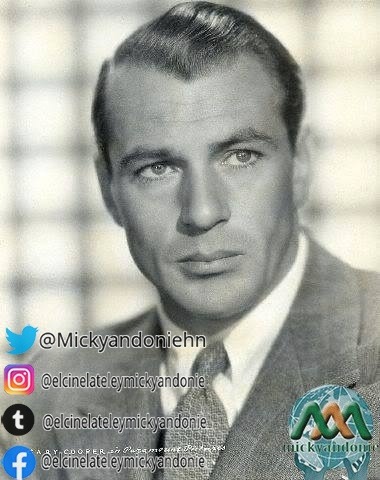
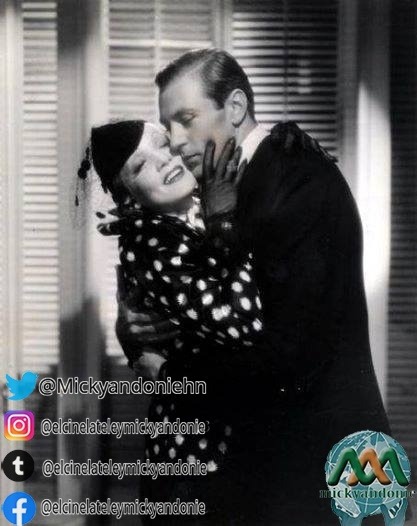

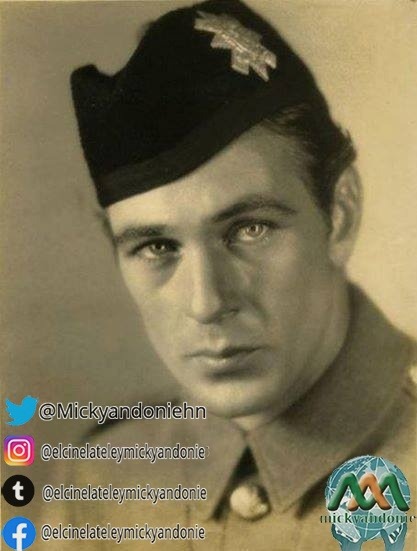
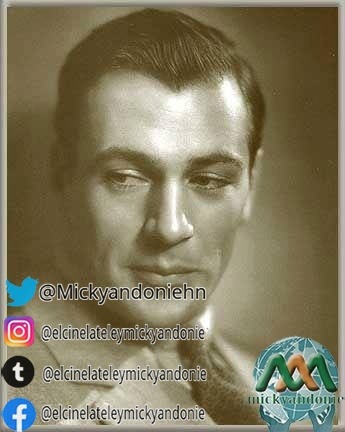
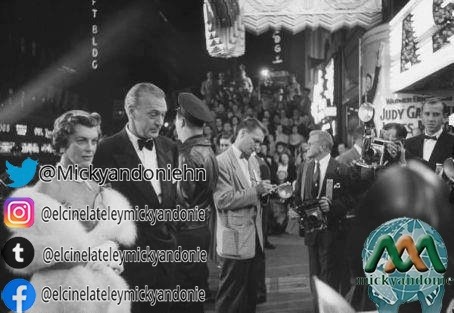
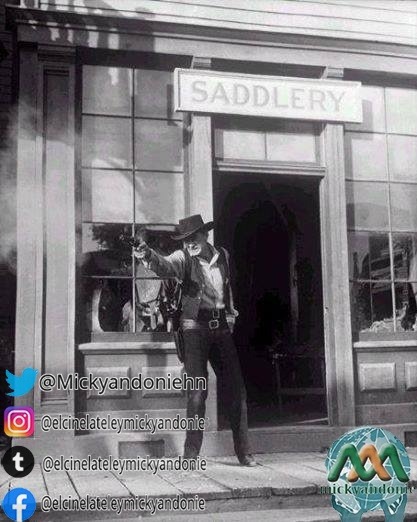
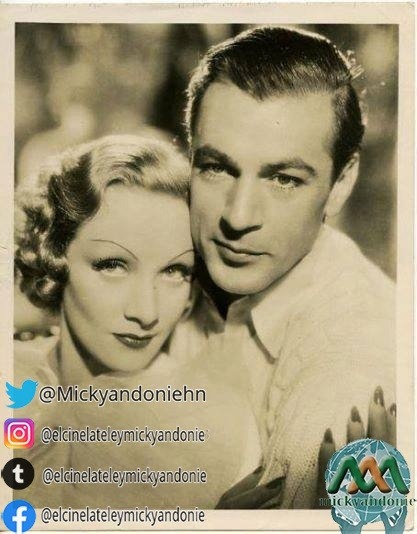
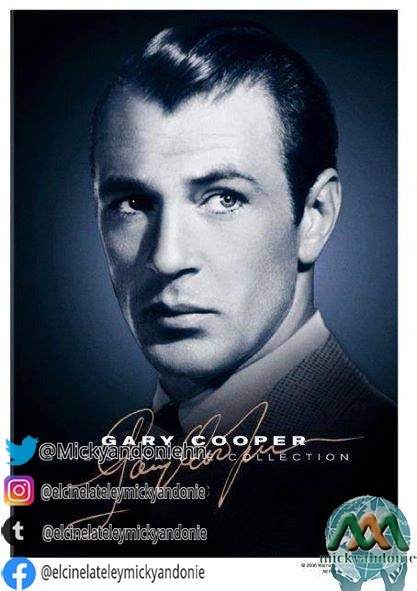
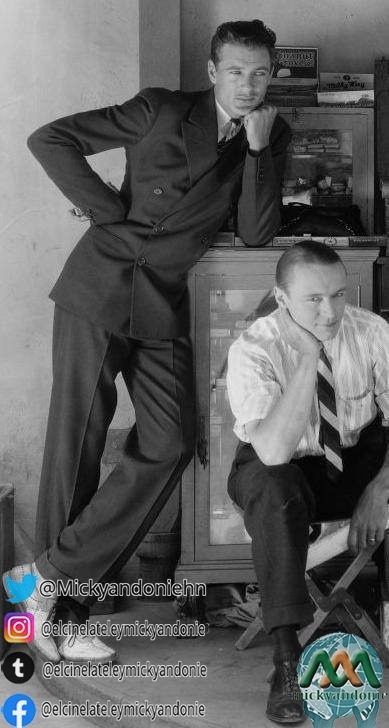
Gary Cooper α:7 de mayo de 1901 Ω:13 de mayo de 1961
Frank James Cooper, más conocido como Gary Cooper (Helena, Montana, 7 de mayo de 1901-Los Ángeles, California, 13 de mayo de 1961), fue un actor estadounidense de ascendencia inglesa. Ganó el premio Óscar en tres ocasiones; el último le fue concedido en reconocimiento a toda su carrera. Hijo de un emigrante inglés que llegó a ser juez de la Corte Suprema del Estado de Montana, trabajaba con sus padres en el rancho de su propiedad mientras asistía a la escuela. Más tarde, entra en el Wesleyan College, de Bozeman, para estudiar técnico agrícola, y en la Universidad de Grinnell (estado de Iowa), donde estudia arte. Sufre un accidente automovilístico que le afecta la cadera. En aquella época aspiraba a ser caricaturista político y asistir a la Escuela de Arte de Chicago. Abandona sus estudios y se traslada a Hollywood, donde, en 1925, debuta con La hora maldita (The Thundering Herd), rueda algunos cortos, y posteriormente actúa como actor secundario en varios westerns. Adopta el nombre artístico de Gary Cooper; quiso llamarse Frank Cooper pero ya existía algún otro actor que lo usaba. En 1926 es contratado por la Metro-Goldwyn-Mayer con un sueldo de 50 dólares semanales, y consigue su primer papel importante en Flor del desierto (The Winning of Barbara Worth) dirigido por Henry King, lo que le convierte en uno de los actores más populares de Hollywood. La MGM intenta retenerle con un contrato más largo, pero Cooper acepta la oferta de la productora Paramount, económicamente muy superior: 175 dólares semanales.
FILMOGRAFIA 1960 Sombras de sospecha George Radcliffe. 1959 Alias Jesse James Cowboy. 1959 El árbol del ahorcado Dr Joe Frail. 1959 Llegaron a Cordura Thomas Thorn. 1959 Misterio en el barco perdido Gideon Patch. 1958 El hombre del Oeste Link Jones. 1957 Ariane Frank Flannagan. 1956 La gran prueba Jess Birdwell. 1954 El jardín del diablo Hooker. 1954 Veracruz Ben Trane. 1953 Retorno al paraíso -. 1952 El honor del capitán Lex le Major Alex Kearney. 1952 Solo ante el peligro Will Cane. 1951 Tambores lejanos Capitaine Quincy Wyatt. 1951 Un gran país Texas. 1950 Dallas, ciudad fronteriza Blayde Hollister. 1950 El Rey del Tabaco -. 1949 El Manantial Howard Roark. 1947 Los inconquistables Captain Christopher Holden. 1946 Clandestino y caballero Prof. Alvah Jesper. 1945 El caballero del Oeste Melody Jones. 1944 Por el valle de las sombras Dr. Corydon M. Wassell. 1943 Por quién doblan las campanas Robert Jordan. 1942 El orgullo de los Yanquis Lou Gehrig. 1941 Bola de fuego professeur Bertram Potts. 1941 El Sargento York Alvin C. York. 1941 Juan Nadie John Willoughby / John Doe. 1940 El forastero Cole Hardin. 1938 El vaquero y la dama Stretch. 1938 La octava mujer de Barba Azul Michael Brandon. 1938 Las aventuras de Marco Polo Marco Polo. 1937 Almas en el mar Michael 'Nuggin' Taylor. 1936 El general murió al amanecer O'Hara. 1936 El secreto de vivir Longfellow Deeds. 1935 Noche nupcial Tony Barrett. 1935 Sueño de amor eterno Peter Ibbetson. 1935 Tres lanceros bengalíes Lieutenant Alan McGregor. 1934 Ahora y siempre Jerry Day. 1934 La espía número 13 Capt. Jack Gailliard. 1933 Alicia en el País de las Maravillas Le chevalier blanc. 1933 Una mujer para dos George Curtis. 1932 Adiós a las armas Lt Frederic Henry. 1932 Si j'avais un million -. 1931 Las calles de la ciudad The Kid. 1930 Marruecos Tom Brown. 1930 Paramount on Parade -. 1929 El canto del lobo Sam Lash. 1927 Alas Cadet White. PRODUCCIÓN 1945 El caballero del Oeste Productor.
2 notes
·
View notes
Text
Fwd: Conference: Sofia_Bulgaria.DNABarcoding.May25-27
Begin forwarded message: > From: [email protected] > Subject: Conference: Sofia_Bulgaria.DNABarcoding.May25-27 > Date: 23 February 2022 at 06:36:12 GMT > To: [email protected] > > > Dear colleagues, > > The Organizing Committee of the International Conference on DNA Barcoding > and Biodiversity cordially invites you to attend the conference which > will be held on 25-27 May 2022 in Park Hotel Moskva, Sofia, Bulgaria > as a hybrid event (both virtually and in-person). The conference is > organized by the Institute of Plant Physiology and Genetics, Bulgarian > Academy of Sciences, as part of the BULCode project supported by the > National Program "European Scientific Networks", Ministry of Education > and Science of Bulgaria. > > The aim of the conference isto contribute to the project's overall goal > to promote biodiversity studies through DNA barcoding technologies > and to strengthen the networking capacity in this field of research > in Bulgaria. The 3-day event will bring together renowned scientists > engaged in biodiversity and taxonomic studies and implementing DNA > marker technologies, including DNA barcoding and metabarcoding, in their > research. Examples of successful national DNA barcoding initiatives will > also be presented. > > The conference will address various fields of application of DNA barcoding > and metabarcoding as well as other DNA-based molecular approaches under > the following main topics: > > SystematicsEcological researchConservation of biodiversitySustainable > agriculture and food safety practices > > The conference is listed on iBOL webpage - > https://ift.tt/TEd5Mkt. > > The event will be open to all contributing authors with no registration > fee. The terms of participation are announcedon the conference website. > > We are excited that such renowned invited speakers have confirmed their > participation so far: > > Prof. Paul Hebert > Centre for Biodiversity Genomics, University of Guelph, Canada > > Prof. Hugo de Boer > Natural History Museum, University of Oslo, Norway > > Prof. Marko Mutanen > Ecology and Genetics Research Unit, > University of Oulu, Finland > > Prof. Torbj¸rn Ekrem > Department of Natural History, NTNU University Museum, Norway > > Dr. Fedor Èiampor Jr > Plant Science and Biodiversity Centre, Slovak Academy of Sciences, > Bratislava, Slovakia > > Prof. Dr. Kristy Deiner > ETH Zurich, Switzerland > > Assoc. Prof. Laura Parducci > Sapienza University of Rome,Italy > > We would be grateful if you share information about the event with your > colleagues so that more people have the opportunity to attend. > > For additional information about the conference, please visit the websites > of the conference itself https://ift.tt/74Z8yUr and of > the project https://ift.tt/pxEjVJP. > > Sincerely yours, > > Assist. Prof. Georgi Bonchev > Chairman of the Organizing Committee > > Mira Bonova > Event Manager > > 17 Frederic Joliot-Curie Str., bldg. 2, fl. 5, office 9 > Sofia 1113, Bulgaria > tel: (+359) 2 9877 422 > mobile: (+359) 896 700 956 > fax: (+359) 2 988 80 35 > email: > [email protected] > www.cmebg.com > > > Mira Bonova > via IFTTT
0 notes
Text
Science and Chemistry Classes
Alzheimer's research: Inflammatory markers are conspicuous at an early stage
by German Center for Neurodegenerative Diseases
14/01/2022
Long before the onset of dementia, there is evidence for increased activity of the brain's immune system. Researchers from DZNE and the University Hospital Bonn (UKB) come to this conclusion based on a study of more than 1,000 older adults. To this end, various proteins were measured in the cerebrospinal fluid: They served as so-called biomarkers that indicate inflammatory processes of the nervous system. As it turned out, some of these molecules seem to be part of a damage control program of the immune system, which could be useful for the development of new drugs. The study results have been published in the scientific journal Neuron.
"We have found that some of these inflammatory markers are conspicuous even when there are no symptoms of dementia yet," Heneka says. "Based on the data we have so far, we can't specify the lead time at this point. But my estimate is that it is at least ten to twenty years."
In recent years, it has become evident that the brain's immune system and related inflammatory processes—also known as "neuroinflammation"—significantly contribute to the development of Alzheimer's disease. In view of this, the scientists analyzed various immunological biomarkers that are characterized by good detectability in the cerebrospinal fluid and reproducible results. "It was already known that these markers indicate immune processes in the context of Alzheimer's disease. However, how these markers relate to brain volume, cognitive performance and other parameters had not been studied as comprehensively as we have now," explains Prof. Michael Heneka, who led the current study during his long-time tenure at DZNE and UKB. Since the beginning of this year, he has been director of the Luxembourg Centre for Systems Biomedicine.
Extensive database
The starting point for the investigations were data from the so-called DELCODE study, in which the DZNE researches dementia and its preliminary stage in collaboration with several university hospitals across Germany. The current study project included findings from around 300 women and men, all over the age of 60. This group comprised cognitively normal adults, individuals with memory problems of varying degrees of severity and also people with dementia of the Alzheimer's type. Samples of cerebrospinal fluid and standardized memory tests were available from all study participants, and magnetic resonance images of the brain were taken from most of them. For each study participant, the data included the baseline examination and at least one follow-up one year later. For some subjects, findings spanned multiple follow-ups over a period of up to five years.
Striking even without dementia
"There are established biomarkers for amyloid and tau. These are proteins that accumulate in the brain in Alzheimer's disease and can also be detected in the cerebrospinal fluid. Their levels usually change even before symptoms of dementia arise, which is considered a sign of processes for neuronal damage. We wanted to know whether inflammatory markers respond in a similar way," says Dr. Frederic Brosseron, a scientist at DZNE and one of the first authors of the current publication in Neuron. "In fact, we found that most inflammatory markers are elevated, especially when a marker for neuronal damage is elevated. This applies even when these individuals do not yet show symptoms of dementia. Thus, the inflammatory markers we recorded are particularly useful for studying neuroinflammation at early stages of disease."
Evidence for neuroprotection
Two of these markers in particular—proteins belonging to the "TAM receptor family"—seem to be linked to a damage control program. In study participants with particularly levels of these high markers, brain volume was comparatively large and cognitive functions declined more slowly over time. To verify these findings, Heneka's team evaluated data from a study cohort of ACE Alzheimer Center Barcelona with more than 700 adults, must of them with mild cognitive impairment. This analysis confirmed the results from the DELCODE study were.
"Inflammatory processes are not bad per se, but rather a normal, protective reaction of the immune system to threatening stimuli, especially at the beginning. But they should not last too long, therefore they need to be regulated," says Heneka. TAM family proteins are known to influence immune responses and promote disposal of cellular waste, he explains. "Supporting this protective function would be an interesting approach for pharmaceutical research. This is where I see potential for application of the markers we have identified. For the early detection of dementia in routine care, measuring these markers is too complex. But when testing new drugs in clinical trials, there are other technical options. In trials, indicators are needed to assess whether interventions are working and whether tested drugs are effective. The TAM markers could be very useful for this."
0 notes
Text
Bibliography
Hammerschlag, K.R., 2014. Excavating Evidence from Frederic Leighton's Paintings of the Female Nude. victorian studies, 56(3), pp.442-457.
Hall, J., 2018. Dictionary of subjects and symbols in art. Routledge.
Anderson, W.S. ed., 1997. Ovid's Metamorphoses. University of Oklahoma Press.
Baldry, A.L., 2019. Leighton. Good Press.
Munich, A.A., 1989. 4. Celestial Emblems. In Andromeda’S Chains (pp. 132-178). Columbia University Press.
Poynter, E., Alma-Tadema, L. and Moore, A., Art Appreciation Lecture Series 2014 Realism to Surrealism: European Art and Culture 1848-1936 Victorian classical painters and the cult of beauty Assoc. Prof. Alison Inglis, University of Melbourne 19/20 February 2014.
0 notes
Text
Schwarzweiss Porträts von Musikern
Faces of Culture in Alte Druckerei Ottensen
Ken Norris US-Amerikanischer Sänger Tillmann Oberbeck Bassist Moritz Hamm Drummer Ken Norris US-Amerikanischer Sänger Buggy Braune in der Alten Druckerei Andrea Merlo Frederic Chopin Andrea Merlo liebt Frederic Chopin Prof. Dr. Herbert Bruhn, Alte Druckerei Prof. Dr. Herbert Bruhn Andrea Merlo Pianist

View On WordPress
#black & white#culture#Fotografie#Hamburg#Images#Jazzmusiker#Kulturschaffende#music#musicans#Musiker#Photography#Photos
0 notes
Photo

FINANCE INDIA, (ISSN : 0970 - 3772), The Quarterly Journal of Finance, published since 1987 regularly is a Two Tier Triple Blind Peer Review Journal having an Editorial Board of over 85+ Experts from all over World including 6 Nobel Laureates. It is indexed and abstracted by more than 37+ global agencies and over 100 Universities & UGCs worldwide. *Finance India is placed at 4th out of 22,000+ Journals* Indexed in the SJIF Journals Rank by the Scientific Journal Impact Factor (SJIF) with *SJIF Impact Factor* Value for *2021 as 8.257* FINANCE INDIA is a Quarterly(refereed) journal of Finance of Indian Institute of Finance, published regularly since 1987. Each issue is of more than 400 pages. Some of the most prominent experts: Franco Modigliani, Merton H. Miller, Bob Merton, Bob Mundell, Douglass North, James Heckman, Rene Sultz, Dick Brealey, Frederic Mishkin, Jagdish Bhagwati are on the editorial board of the journal headed by eminent researcher and educationist Prof. Dr. hab J.D Agarwal as Editor-in- Chief. I am glad to inform you that FI is indexed/abstracted by - *SCOPUS ; ABDC ; UGCs ; JEL* ; Cabells; 37+ Agencies Worldwide - Finance India is placed at 4th out of 22,000+ Journals in SJIF Journal Rank Indexed by Scientific Journal Impact Factor (SJIF) with *SJIF Impact Factor 2021 = 8.257* - Finance India is ranked *3rd WORLDWIDE* by B&E Datalinks of American Statistical Association - *International Scientific Indexing* (ISI) Indexation & *Impact Factor of 1.812 (2020-21)* - *UGC India [Group II 2020* (earlier as Group A UGC-CARE List 2019 No 75 & Code 1972 & 8198 till May 2018)] ; UGC Hungary ; UGC Uzbekistan & by over 120+ Universities Worldwide. - *Scientific Index Services* (SIS) Indexation & Impact Factor of *1.593* (2018) - ICI World of Journals ICV (Index Copernicus Value) Index Factor 73.22 (2015) - Finance India is indexed and abstracted by more than 37+ agencies Worldwide Call for Research Papers http://financeindia.org/asi.htm Ethical Code of Conduct http://financeindia.org/asi.htm Subscription Information http://financeindia.org/sf.htm Download FI Brochure http://www.financeindia.org/FI-Brochure.PDF https://www.instagram.com/p/COfkKGjsW0W/?igshid=19kquj96k5ik5
0 notes
Text
RAIS WA UFARANSA AMPA PONGEZI RAIS WA TANZANIA


Balozi wa Ufaransa nchini Frederic Clavier, amemkabidhi Waziri wa Mambo ya Nje, Prof. Palamagamba Kabudi, barua iliyoandikwa na Rais wa Ufaransa Emmanuel Macron, kwenda kwa Rais Dkt. John Magufuli

Rais wa Ufaransa Mhe. Emmanuel Macron amemwandikia barua ya pongezi Rais wa Jamhuri ya wa Tanzania Dkt. John Pombe Magufuli kwa kuiwezesha Tanzania kuingia katika hadhi ya nchi ya uchumi wa kati…
View On WordPress
0 notes
Text
Telepathology and Parapsychogeography | 2018
Telepathology and Parapsychogeography Jan Kolský, Vojtěch Märc a Matěj Pavlík| ARTALK REVUE 2018
edite by Hana Janečková
The very nature of explored events has been a subject of lengthy discussions, especially in the Eastern Bloc, along the lines of official dialectic materialism. Individual researchers debated whether telepathic transmission is carried by electromagnetic waves or another form of physical or non-physical energy. In this context, the contrasting idea of Soviet researcher I. M. Kogan, arguing that the antennae of telepathically interconnected persons were actually their bodies, was widely applauded. From the psychotronic perspective, human, animal and vegetable bodies – aural and psychic ones – represent nodes within a network, spun out of organisms, energies and information. These bodies may show “regress of awareness” which “lost its power to think unconditionally and bear the conditional”8 or strive for “compensation to regain the lost beauty of life on this Earth by supernatural means.”9 During that process, they undergo an “adventure of modern rationality” which is “swallowing” and at the same time “vomiting” the “strange body called Telepathy,” “without being able to decide for the former or the latter.”10 Caught between distance and proximity, telepathic bodies are writhing in contractions of mystifying and de-mystifying of the world.

Phenomena labelled as parapsychological have been investigated in Czechoslovakia since the 1960s within the fields of psychotronics and psychoenergetics. The term psychotronics was borrowed by local researchers from French engineer Fernand Clerc, who coined it in the journal Vie des Métiers in 1954; the term was then popularized by the radio technology magazine Toute la radio in 1955. The apt question of “what does psychotronics want to be?” was answered by its leading Czech advocate Zdeněk Rejdák as follows: “A scientific discipline dealing with extraordinary human abilities which may appear occasionally and unwittingly, however, they may just as well be stabilized in some individuals by training after laboratory research. These abilities are a manifestation of certain specific neurophysiological and physiological processes of the human body. They are bound to a certain energetic form exteriorized by the human organism. This energetic form is able to transmit information from one person to another; in that case we speak of telepathy; or, one can receive information remotely; that would be telegnosis; and, thirdly, this energetic form, if appropriately modified, can perform tasks remotely and influence the movement of matter; that is what we call telekinesis (psychokinesis).”2 “Prof. Pobers from the Parapsychology Department at Utrecht University was sent to the Antilles to study the role of telepathy commonly used among the primitives. He found that when local women want to send a message to their man or son they turn to a tree and the father or son will bring what they asked for. One day, when Pobers witnessed the phenomenon and asked the rural woman why she would use a tree among anything else, her reply was both surprising and able to solve the entire modern problem of our instincts being stunted by the machines we rely on. Q: ‘Why do you turn to a tree?’ A: ‘Because I’m poor. If I was rich, I would have a phone.’”[1]

Documentation of an experiment by Robert Pavlita performing magnetization of organic, wooden material. Photo: Milan Smrž’s archive
Phenomena labelled as parapsychological have been investigated in Czechoslovakia since the 1960s within the fields of psychotronics and psychoenergetics. The term psychotronics was borrowed by local researchers from French engineer Fernand Clerc, who coined it in the journal Vie des Métiers in 1954; the term was then popularized by the radio technology magazine Toute la radio in 1955. The apt question of “what does psychotronics want to be?” was answered by its leading Czech advocate Zdeněk Rejdák as follows: “A scientific discipline dealing with extraordinary human abilities which may appear occasionally and unwittingly, however, they may just as well be stabilized in some individuals by training after laboratory research. These abilities are a manifestation of certain specific neurophysiological and physiological processes of the human body. They are bound to a certain energetic form exteriorized by the human organism. This energetic form is able to transmit information from one person to another; in that case we speak of telepathy; or, one can receive information remotely; that would be telegnosis; and, thirdly, this energetic form, if appropriately modified, can perform tasks remotely and influence the movement of matter; that is what we call telekinesis (psychokinesis).”[2]
Telepathy, or “remote feeling,” has been discussed since 1882 when this term was introduced by classic philologist, poet and school inspector Frederic Meyers, co-founder of the UK’s Society for Psychical Research. Similar societies to this one, founded at the time and later, especially in Europe and North America, started conducting controlled telepathic experiments as well as recording cases of spontaneous telepathy. The latter implied a connection between close people, where one of them was exposed to remarkable tension or danger at a specific moment. These experiments used primarily sets of special cards (including the Zener cards with five symbols and animal cards used by S. G. Soal among others). History’s most successful psychics include Pavel Štěpánek, who participated in more than 40 000 card experiments in the first half of the 1960s under the guidance of Czech researcher Milan Rýzl as well as a number of international experts. However, probably due to a certain exhaustion caused by the repetitive nature of the card experiments, these were gradually abandoned; since the 1970s, with regard to what is known as Ganzfeld experiments, the participants would transmit more complex signals, such as entire perceptions of a certain environment, rather than schematic symbols.

Documentation of an experiment by Robert Pavlita performing magnetization of organic, wooden material. Photo: Milan Smrž’s archive
The methodology of these experiments with “remote perception” was developed primarily by American researchers Harold E. Puthoff and Russel Targ, beginning in the 1970s, at the Stanford Research Institute International.
“A one-time manifestation of distance, however near it is,”[3] if near enough for us to sense it or even suffer from it, reveals telepathy as a “product of ambivalent modernity” where “spooky experiences of distance and relation, of traumatic severances and equally disturbing intimacies, have only intensified in an increasingly globalized and technologically saturated world.”[4] 19th century interest in telepathy was stirred up by the development of telecommunication and recording technologies, which enabled the transmission of the message across substantial temporal and spatial distances.
Technologies provided a certain parallel grounding around which both the scientific research into telepathy and popular notions of telepathy were coordinated. If we maintain that “mystical radiation is a modest anticipation of technical radiation,”[5] or admit that “any sufficiently advanced technology is indistinguishable from magic,”[6] it is probably true that “the difference between technology and magic is a thoroughly historical variable.”[7] Radiotechnological terminology even made it into the title of Upton Sinclair’s Mental Radio in 1930. Furthermore, several telepathy researchers came up with a direct professional “ethereal” experience; these included Bernard Bernardovich Kazhinsky, author of Biological Radio Communications, who explored telepathy in the USSR from the 1920s, and radio engineer Karel Drbal, a remarkable figure of Czech psychotronics.
The very nature of explored events has been a subject of lengthy discussions, especially in the Eastern Bloc, along the lines of official dialectic materialism. Individual researchers debated whether telepathic transmission is carried by electromagnetic waves or another form of physical or non-physical energy. In this context, the contrasting idea of Soviet researcher I. M. Kogan, arguing that the antennae of telepathically interconnected persons were actually their bodies, was widely applauded. From the psychotronic perspective, human, animal and vegetable bodies – aural and psychic ones – represent nodes within a network, spun out of organisms, energies and information. These bodies may show “regress of awareness” which “lost its power to think unconditionally and bear the conditional”[8] or strive for “compensation to regain the lost beauty of life on this Earth by supernatural means.”[9] During that process, they undergo an “adventure of modern rationality” which is “swallowing” and at the same time “vomiting” the “strange body called Telepathy,” “without being able to decide for the former or the latter.”[10] Caught between distance and proximity, telepathic bodies are writhing in contractions of mystifying and de-mystifying of the world.

One of the locations of telepathic experiment carried out by Jan Kolský, Vojtěch Märc and Matěj Pavlík, the bridge of Slovak National Uprising in Bratislava
[1] This quote from Jan Houska’s book is here to illustrate the relationship of traditional science to “Nature” and binaries of technology and magic. Jan Houska, Magie lidských smyslů (Praha: Nakladatelství L podniku služeb TESO, 1991), 71.
[2] Zdeněk Rejdák, ed., Telepatie a jasnovidnost (Praha: Svoboda, 1970), 7. [3] Walter Benjamin, “Umělecké dílo ve věku své technické reprodukovatelnosti,” Výbor z díla I: Literárněvědné studie (Praha: OIKOYMENH, 303), 303.
[4] Roger Luckhurst, The Invention of Telepathy (New York: Oxford University Press, 2002), 276.
[5] Theodor W. Adorno, “Teze proti okultismu,” Minima Moralia. Reflexe z porušeného života (Praha: Academia, 2009), 238.
[6] Arthur C. Clarke, Profiles of the Future: An Inquiry into the Limits of the Possible (New York: Harper & Row, 1973).
[7] Walter Benjamin, “Malé dějiny fotografie” in Co je to fotografie?, ed. Karel Císař (Praha: Herrmann & synové, 2004), 11.
[8] See Adorno, “Teze,” 235.
[9] Sigmund Freud, “Psychoanalysis and Telepathy,” in Psychoanalysis and the Occult, ed. George Devereux (New York: International Universities Press, 1953), 56–57. 10 Jacques Derrida, “Telepathy,” Oxford Literary Review
[10], no. 1 (1988): 38.
text available in pdf https://artalk.cz/wp-content/uploads/2018/06/AR-2-EN-125088.pdf
experiment https://luckypdf.com/arttalktest/
text available in czech here: https://artalk.cz/2018/06/25/telepatologie-a-parapsychogeografie/
0 notes
Text
UPDATED VERSION: FULL LIST OF COMMISSIONERS AND SPECIAL ADVISERS APPOINTED BY GOVERNOR BABAJIDE SANWO-OLU

FULL LIST OF COMMISSIONERS AND SPECIAL ADVISERS APPOINTED BY GOVERNOR BABAJIDE SANWO-OLU COMMISSIONERS: Mr. Rabiu Olowo Onaolapo (Finance) Mr. Tunji Bello (Water Resources and Environment) Mrs. Folashade Adefisayo (Education) Prof. Akin Abayomi (Health) Dr. Idris Salako (Physical Planning and Urban Development) Mr. Gbenga Omotoso (Information and Strategy) Mrs. Bolaji Dada (Women Affairs and Poverty Alleviation) Mr. Lere Odusote (Energy and Natural Resources) Dr. Frederic Oladeinde (Transportation) Mr. Gbolahan Lawal (Agriculture) Moruf Akinderu Fatai (Housing) Mr. Moyo Onigbanjo (SAN) (Attorney General and Commissioner for Justice) Mr. Hakeem Fahm (Science and Technology) Mrs. Ajibola Ponnle (Establishment, Training and Pension) Engr. Aramide Adeyoye (Works and Infrastructure) Mr. Segun Dawodu (Youth and Social Development) Mrs. Uzamat Akinbile-Yusuf (Home Affairs) Mrs. Yetunde Arobieke (Local Government and Community Affairs) Mrs. Lola Akande (Commerce and Industry) Mrs. Olufunke Adebolu (Tourism Arts and Culture) Mr. Sam Egube (Economy Planning and Budget) Dr. Wale Ahmed (Special Duties and Inter-Governmental Relations) SPECIAL ADVISERS: Ms Ruth Bisola Olusanya (Special Adviser on Agriculture) Princess Aderemi Adebowale (Special Adviser on Civic Engagement) Mr. Afolabi Ayantayo (Special Adviser on Political and Legislative Affairs) Mrs. Toke Benson-Awoyinka (Special Adviser on Housing) Joe Igbokwe (Special Adviser for Drainage and Water Resources) Olatunbosun Alake (Special Adviser for Innovation and Technology) Arc. Kabiru Ahmed Abdullahi (Special Adviser on Urban Development) Anofi Olanrewaju Elegushi (Special Adviser on Central Business Districts) Bonu Solomon Saanu (Special Adviser on Arts and Culture) Oluwatoyin Fayinka (Special Adviser on Transportation) Oladele Ajayi (Special Adviser on Commerce and Industry) Tokunbo Wahab (Special Adviser on Education) Solape Hammond (Special Adviser on Sustainable Development Goals) Read the full article
0 notes